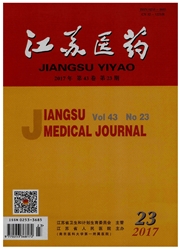

 中文摘要:
中文摘要:
目的观察生理性缺血训练(PIT)对冠心病急性冠脉闭塞侧支循环形成的影响。方法单支血管病变的冠心病患者65例分为PIT组(A组,33例)和对照组(B组,32例)。所有患者在行经皮冠脉介入术中病变血管接受1min的球囊阻塞;A组在球囊阻塞同时做等长握拳收缩(50%最大自主收缩力)1min。所有患者均在球囊阻塞前及阻塞终末时测定血流动力学指标以及侧支血流指数(CFI)相关参数值。结果A组球囊阻塞终末时,CFI、HR、肺毛细血管契压(PCWP)、SBP、DBP、冠状动脉契压(Poccl)均高于阻塞前(P〈O.01),且A组ACFI、AHR、APCWP、ASBP、△DBP和APoccl均大于B组(P〈O.01)。结论冠心病患者急性冠脉闭塞时行P1T可促进缺血心肌侧支循环形成。
 英文摘要:
英文摘要:
Objective To observe the effect of physiological ischemia training (PIT) on collateral circulation formation of acute coronary occlusion in the patients with coronary heart disease (CHD). Methods Sixty-five CHD patients with single vascular lesion were divided into groups of A(treated with PIT, 33 cases) and B(taken as control, 32 cases). Balloon occlusion for 1 min was performed in pathological vessel during percutaneous coronary intervention in both groups. The patients in group A performed isometric exercise(50~ of maximum volunteer contraction) for 1 min at same time. The hemodynamic indexes and related parameters of collateral flow index (CFI) were detected before and after balloon occlusion. Results The values of CFI, heart rate(HR), pulmonary capillary wedge pressure (PCWP), SBP, DBP and coronary occlusive pressure (Pocel) after balloon occlusion were higher after balloon occlusion than those before in group A(P〈0. 01). The values of ACFI, AHR APCWP, ASBP ADBP and APoccl were more in group A than those in group B (P〈0. 01). Conclusion PIT may promote the formation of collateral circulation in the patients with CHD.
 同期刊论文项目
同期刊论文项目
 同项目期刊论文
同项目期刊论文
 期刊信息
期刊信息
